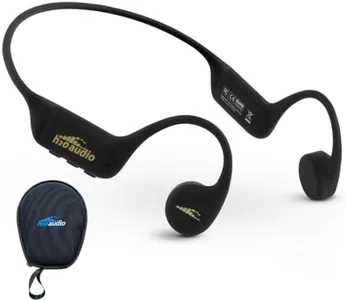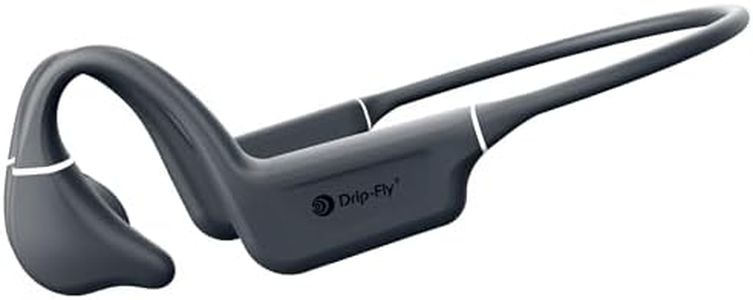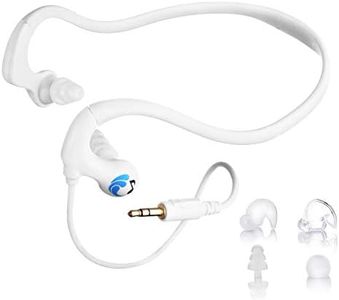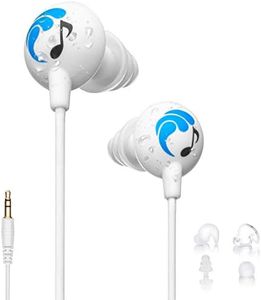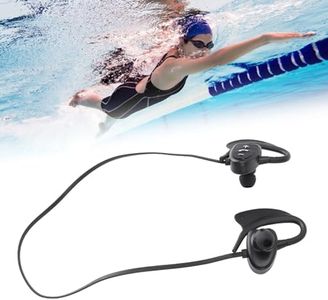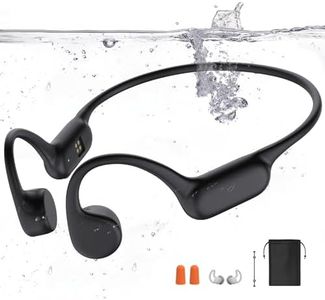We Use CookiesWe use cookies to enhance the security, performance,
functionality and for analytical and promotional activities. By continuing to browse this site you
are agreeing to our privacy policy
10 Best Swimming Headphones
From leading brands and best sellers available on the web.Buying Guide for the Best Swimming Headphones
Choosing the right swimming headphones can make your time in the pool more enjoyable and help you stay motivated during your swim sessions. Since these headphones are exposed to water, and sometimes even submersed for long periods, you need to pay special attention to their waterproof capabilities and how they fit. Sound quality and ease of use while in the water are also important to think about. Understanding these features will help you pick headphones that fit your swimming style and goals.Waterproof Rating (IPX Rating)The waterproof rating, usually shown as an IPX number, tells you how well the headphones can resist water. This is important because swimming headphones need to survive being underwater without damage. Higher numbers (like IPX7 or IPX8) mean better protection, with IPX8 being suitable for swimming. If you swim laps or submerge yourself for long periods, aim for IPX8, which can handle continuous immersion. If you only do light water activities or get splashed, IPX7 might be enough. Think about how you swim—casual dips need less protection than frequent lap swimming.
Fit and ComfortFit and comfort refer to how well the headphones stay in your ears and how comfortable they are during swimming. This is vital because loose headphones can fall out easily, especially during turns or dives. There are different designs, like in-ear, behind-the-ear, or bone conduction. In-ear models can seal out water but might feel tight, while bone conduction rests on your temples and keeps your ears open. Pick a style that matches your comfort preferences and the intensity of your swimming. Test different fits if possible, especially if you have smaller or larger ears or plan on long sessions.
Sound Quality UnderwaterSound quality underwater describes how clear and enjoyable the audio is while swimming. Water affects how sound travels, and regular headphones may sound muffled when submerged. Swimming headphones use special designs to transmit sound more clearly, but sound performance can still vary. If listening to music or podcasts is key to your swim, look for headphones with positive reviews for underwater sound. Some people don’t mind lower sound quality if they just want a steady beat. Decide based on how important audio quality is for your motivation or focus.
Music Storage and PlaybackMusic storage and playback determine how you listen to audio while swimming, since Bluetooth signals don’t travel well underwater. Many swimming headphones have built-in storage for music files, so you upload songs or podcasts directly. The capacity varies—some hold only a few albums, others much more. If you love variety or have long swim sessions, more storage might be better. Make sure the headphones support the kind of music files you use. Consider how often you’ll want to change your playlists and how tech-savvy you are with loading music.
Battery LifeBattery life is how long the headphones last on a single charge. This matters if you swim for long sessions or don’t want to recharge often. Some headphones last a couple of hours, while others can go much longer. If you swim short daily workouts, you won’t need the longest possible battery life, but for extended swim training or travel, longer life is convenient. Think about your usual swim duration and how often you want to recharge to pick the right balance.
Controls and Ease of UseControls and ease of use refer to how simple it is to change songs, adjust volume, or pause playback while swimming. Wet hands and goggles can make small buttons tricky, so easy-to-press controls are helpful. Some headphones have large physical buttons, others use touch controls. Reflect on how much you want to interact with the headphones during a swim. If you set your playlist and go, basic controls are fine. If you adjust often, look for models that are simple and intuitive in the water.

